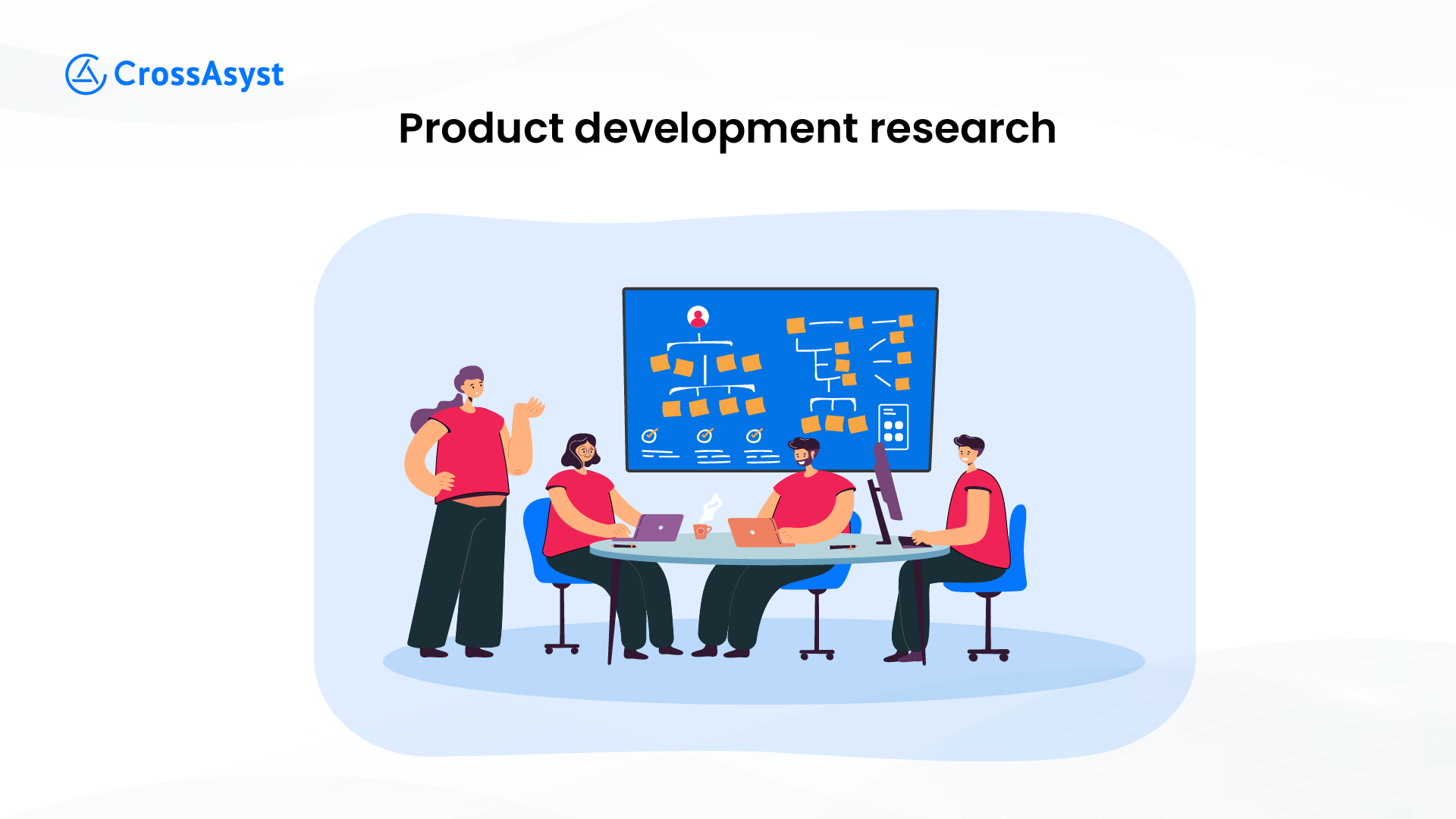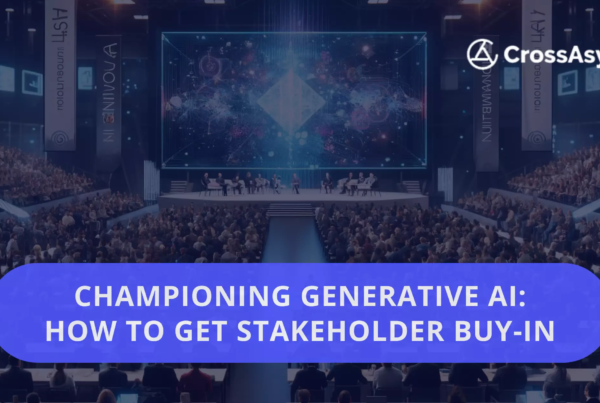Let’s imagine a situation. You’ve finally hit upon that one idea: a software that’s going to revolutionize the industry!
However, do you know how to build it? How are you going to sell it? How much will you price it at? Are you sure of the target market? How long will you need to build it?
The answer to all of these questions, and more, lies in product development research, an integral part of the product development process. For the uninitiated, here’s all you need to know about product development research.
Table of Contents
What Is Product Development Research?
Product development research in software development refers to the process of systematically investigating, analyzing, and gathering information to inform the creation and enhancement of software products. This type of research is crucial for software developers and businesses aiming to build successful, user-friendly, and competitive software solutions.
What Makes Product Development Research Important?
Let’s take a look at the multiple reasons why product development research is important.
To Understand Market Trends and Consumer Preferences:
Research helps in comprehending the dynamic market landscape, identifying emerging trends, and understanding the ever-evolving preferences of consumers. This knowledge is essential for developing software products that align with user needs and expectations.
To Identify Potential Risks and Challenges:
Thorough research enables the identification and assessment of potential risks and challenges associated with the development process. By recognizing these factors early on, teams can proactively address issues, mitigate risks, and enhance the chances of successful product development.
To Stay Informed About Industry Advancements:
Staying informed about industry advancements, technological innovations, and best practices is vital. Research helps development teams remain current with the latest trends, tools, and methodologies, ensuring that their software products are competitive and take advantage of cutting-edge technologies.
To Prevent Unnecessary Expenditures and Optimize Costs:
Research aids in estimating the budget and resource requirements for software development. By conducting a thorough analysis, teams can prevent unnecessary expenditures, optimize costs, and make informed decisions about the allocation of resources, ultimately maximizing the return on investment.
To Ensure Compliance with Industry and Legal Regulations:
Compliance with industry standards and legal regulations is paramount in software development. Research helps teams understand and adhere to relevant standards and regulations, ensuring that the software is secure, ethical, and compliant with legal requirements. This not only mitigates legal risks but also builds trust with users.
Different Stages of Product Development Research
The product development research process involves multiple stages, each of which addresses a unique need. These stages in product development research collectively contribute to creating a well-informed and user-centric software product, increasing the likelihood of market success.
Each stage plays a unique role in refining the product concept, understanding user needs, and optimizing the software for launch and long-term satisfaction.
Here’s a closer look at these stages.

1. Product Ideation:
Product ideation marks the inception of a software development project. This phase is centered around generating innovative ideas that address specific needs or challenges. It involves collaborative efforts, brainstorming sessions, and workshops to encourage creativity among team members.
Activities
- Brainstorming Sessions: Teams gather to generate a wide range of ideas without initial judgment. All ideas are considered, fostering a creative environment.
- Idea Generation Workshops: Structured workshops may include activities like mind mapping, problem-solving exercises, or design thinking sessions to stimulate idea creation.
- Collaboration Among Team Members: Open communication and collaboration among team members are essential. Cross-functional teams contribute diverse perspectives to generate a rich pool of ideas.
- Idea Documentation: All generated ideas are documented for future reference. This documentation may include brief descriptions, potential benefits, and preliminary feasibility assessments.
2. Market Research:
Market research involves a comprehensive examination of the target market to gain insights into customer demographics, behaviors, preferences, and the competitive landscape. This stage is crucial for shaping the product to meet market demands effectively.
Activities:
- Demographic Analysis: Understanding the characteristics of the target audience, such as age, gender, location, and income levels.
- Competitor Analysis: Evaluating competitors to identify strengths, weaknesses, opportunities, and threats. This helps in positioning the product strategically.
- Behavioral Studies: Analyzing customer behaviors, including buying patterns, usage habits, and decision-making processes.
- Surveys and Interviews: Collecting direct feedback from potential users through surveys and interviews to gather qualitative data.
3. Demand Analysis:
Demand analysis goes beyond market research to assess the level of interest and need for the proposed product. It involves forecasting potential sales, understanding market trends, and estimating overall market acceptance.
Activities:
- Sales Forecasting: Projecting potential sales based on market size, expected growth, and historical data.
- Trend Analysis: Examining market trends to identify patterns that could impact product demand.
- Acceptance Assessment: Evaluating the likelihood of market acceptance by considering factors such as changing consumer preferences and technological advancements.
4. Idea Screening:
Idea screening is the process of evaluating and refining the generated ideas from the ideation phase. It involves applying specific criteria to filter out less viable concepts, ensuring that only the most promising ideas proceed to the next phases of development.
Activities:
- Feasibility Analysis: Assessing the technical, financial, and operational feasibility of each idea.
- Alignment with Company Goals: Evaluating whether the ideas align with the company’s mission, vision, and strategic objectives.
- Market Potential Assessment: Determining the potential market size, target audience, and scalability of each idea.
5. Concept Testing and Validation:
Concept testing involves presenting refined product concepts to a target audience for feedback. This feedback helps in validating assumptions, assessing user reactions, and refining the product concept further.
Activities:
- User Feedback Sessions: Gathering direct feedback from potential users through focus groups, surveys, or prototype testing.
- Assumption Validation: Testing and validating assumptions made during the ideation and concept development phases.
- Refinement Iterations: Iteratively refining the product concept based on user feedback to enhance its alignment with user expectations.
6. User Experience Research:
User experience (UX) research focuses on understanding how users interact with the product. It involves studying user behaviors, preferences, and pain points to optimize the design and functionality of the software. UX research is iterative, ensuring that the product aligns with user expectations throughout the development process.
Activities:
- Usability Testing: Observing how users interact with prototypes or early versions of the software to identify usability issues.
- User Persona Development: Creating detailed user personas to guide the design process and ensure a user-centered approach.
- Heatmaps and Analytics: Analyzing user behavior through tools like heatmaps and analytics to understand usage patterns.
7. Prototype Research:
Prototyping involves creating a preliminary version of the software to test its functionality and gather user feedback. Prototype research assesses user reactions, identifies usability issues, and guides further refinements before moving to full-scale development.
Activities:
- Prototyping Tools Usage: Creating interactive prototypes using tools like Figma, Sketch, or InVision.
- User Testing: Soliciting feedback from users on the prototype’s design, functionality, and overall user experience.
- Iteration and Improvement: Making necessary adjustments to the prototype based on user feedback before proceeding to full development.
8. Pricing Research:
Pricing research aims to determine the optimal pricing strategy for the software product. It involves analyzing market pricing trends, conducting competitor analysis, and assessing perceived value by potential customers.
Activities:
- Competitor Pricing Analysis: Evaluating the pricing strategies of competitors to identify market norms and positioning.
- Value Perception Assessment: Assessing how potential customers perceive the value of the product and what they are willing to pay.
- Pricing Model Selection: Choosing a pricing model that aligns with both the product’s value proposition and customer expectations.
9. Develop the Product for Launch:
This stage involves the actual development of the software product based on the insights gathered from earlier research stages. Agile development methodologies are often employed to iteratively build and improve the product. Continuous collaboration between development teams and stakeholders ensures that the final product aligns with the envisioned goals.
Activities:
- Agile Development Sprints: Breaking down the development process into iterative sprints, each focused on delivering specific features or improvements.
- Continuous Integration and Testing: Implementing a robust testing process to identify and address issues promptly.
- Feedback Loops: Establishing feedback loops with stakeholders to ensure alignment with project goals and user expectations.
10. Satisfaction Survey and Loyalty Research:
After the product is launched, satisfaction surveys and loyalty research are conducted to gather feedback from users. This information helps in assessing user satisfaction, identifying areas for improvement, and building customer loyalty. It is an ongoing process to ensure the long-term success and sustainability of the software product in the market.
Activities:
- Post-Launch Surveys: Collecting feedback from users regarding their satisfaction with the product’s features, performance, and overall experience.
- Net Promoter Score (NPS) Analysis: Assessing the likelihood of users recommending the product to others as a measure of loyalty.
- Feature Request Analysis: Reviewing user suggestions for new features or improvements to guide future development efforts.
Product Development Research Best Practices
Here are some product development research best practices to ensure the research conducted is impactful, effective and leads to the creation of user-centric, successful software products.

1. User-Centric Approach:
- Prioritize understanding user needs, behaviors, and preferences.
- Involve users at every stage of the development process to create a product that resonates with the target audience.
2. Cross-Functional Collaboration:
- Foster collaboration between diverse teams, including developers, designers, marketers, and customer support.
- Leverage the expertise of each team member to gather comprehensive insights and perspectives.
3. Agile Methodologies:
- Embrace agile development methodologies to facilitate iterative and adaptive planning.
- Conduct research in parallel with development sprints for continuous improvement and responsiveness to changing requirements.
4. Early and Continuous Research:
- Start research early in the development process to identify potential issues and opportunities.
- Continuously gather feedback throughout the product lifecycle to inform refinements and updates.
5. Multifaceted Research Methods:
- Use a combination of research methods, including surveys, interviews, usability testing, and analytics.
- Employ both quantitative and qualitative approaches to gain a holistic understanding of user needs.
6. Clear Research Objectives:
- Define clear research objectives and questions for each stage of the product development process.
- Ensure that research activities are aligned with broader business goals and product strategy.
7. Ethical Considerations:
- Prioritize user privacy and data security in all research activities.
- Obtain informed consent from participants and adhere to ethical guidelines in data collection and analysis.
8. Iterative Prototyping:
- Incorporate iterative prototyping to validate concepts and gather user feedback.
- Use prototypes to test and refine design elements, features, and overall user experience.
9. Continuous Learning Culture:
- Foster a culture of continuous learning within the development team.
- Encourage the sharing of research findings and insights across teams to enhance collective knowledge.
10. Feedback Loops:
- Establish feedback loops with stakeholders, including users, product managers, and executives.
- Regularly communicate research findings to ensure that the product development stays aligned with business objectives.
11. Document and Share Findings:
- Maintain detailed documentation of research activities, findings, and decisions.
- Share research insights with relevant stakeholders to inform decision-making and enhance organizational knowledge.
12. Scalability Considerations:
- Consider scalability in both the technical and business aspects of the product.
- Anticipate potential challenges related to growth and plan for scalability in the development process.
13. Risk Management:
- Identify and assess potential risks early in the development process.
- Develop strategies to mitigate risks and have contingency plans in place.
14. Realistic Timelines and Resources:
- Set realistic timelines and allocate sufficient resources for research activities.
- Avoid rushing through research phases, as this can lead to incomplete insights and compromised quality.
15. Post-Launch Evaluation:
- Conduct post-launch evaluations to assess the product’s performance in the real market.
- Gather user feedback, analyze usage data, and identify areas for improvement in future iterations.
Leverage Crossasyst’s Rigorous Product Development Research
CrossAsyst has been at the forefront of building industry-leading custom software solutions for our clients for well over a decade. One of the reasons our clients choose us is our rigorous approach to product development research.
Whether it is the amount of time we spend understanding our client’s needs, including researching their target demographic, the use of Agile methodologies, our iterative approach to prototyping, attention to compliance and regulations, relentless testing, or use of feedback loops, our teams ensure no stone is left unturned while building cutting edge software solutions.
Contact our team today, and let’s start researching your next software innovation.




